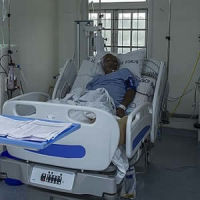Sepsis is a life-threatening condition and early detection is critical to ensure that the patient receives timely and appropriate treatment. For almost 25 years, clinicians have used the systemic inflammatory response syndrome (SIRS) criteria, a measure of the clinical expression of the host response to inflammation, as a marker of sepsis. A new approach to the diagnosis of sepsis has been proposed by Miller et al., based on their research published in the American Journal of Respiratory and Critical Care.
The research explored the role of molecular diagnostics in distinguishing sterile inflammation from sepsis in the ICU. The authors evaluated the SeptiCyte™ LAB, an FDA-cleared four-gene host response assay, in a prospective cohort at seven sites in the USA and an additional validation site in the Netherlands to determine its performance.
The SeptiCyte™ LAB is a real-time, reverse-transcription, quantitative polymerase chain reaction (RT-qPCR) assay that quantitates the relative expression levels of four genes (CEACAM4, LAMP1, PLAC8, PLA2G7) with a turnaround time of approximately six hours. The proposed test generates a score in four groups (e.g. bands), and uses a binary cutoff of 3.1 to classify patients as high or low risk of sepsis.
The study found that the SeptiCyte™ LAB and subsequent SeptiScore™ values were markedly higher among sepsis patients compared to those with sterile inflammation (area under the receiver operating characteristic curve, range 0.82 to 0.89). The discrimination of the SeptiCyte LAB improved the classification of sepsis versus sterile inflammation beyond more easily measured clinical classifiers like procalcitonin or the total number of SIRS criteria within 24 hours of ICU admission. These results were robust to variations in demographics, race, geography, and strategies to handle missing data.
In a related commentary, Christopher W. Seymour, MD, MSc, Departments of Critical Care and Emergency Medicine, University of Pittsburgh School of Medicine, and Gordon Bernard, MD, Division of Pulmonary and Critical Care Medicine, Vanderbilt University Medical Center, highlight these key limitations to Miller et al.'s proposed approach in sepsis diagnosis:
- The point at which patients were enrolled varied in their ICU course – including patients who had already received antibiotic therapy up to 24 hours prior to sampling. "The timing of sampling in the trajectory of the patients’ sepsis episode and antibiotic treatment could impact the discrimination of the SeptiCyte LAB," say Drs. Seymour and Bernard.
- The reported performance characteristics are limited to only those patients with SIRS, excluding the more than 1 in 8 who may be septic without SIRS features.
- The test performance was the lowest in pneumonia, the most common cause of sepsis.
The work by Miller et al. also raises some important questions, including "what would be the optimal clinical moment(s) to test the SeptiCyte LAB?" The study data derive from an ICU cohort; however, as the commentators point out, the majority of potential sepsis cases are evaluated during prehospital care and the emergency department.
"In these forward clinical settings, at-risk patients with SIRS criteria are not yet treated with antibiotics and the diagnosis of sepsis is not always overt," the commentators write. "Further evaluation of SeptiCyte LAB could include a closer examination of the SeptiCyte LAB in these emergency situations in order to better determine its practical application and clinical utility."
Source: American Journal of Respiratory and Critical Care
Image Credit: Pixabay
References:
Seymour CW, Bernard G (2018) Making sepsis molecular – is there enough time for new tests? AJRCCM Articles in Press. Published on 20 April 2018 as 10.1164/rccm.201804-0684ED
Latest Articles
Sepsis, SIRS, systemic inflammatory response syndrome, SeptiCyte LAB
Sepsis is a life-threatening condition and early detection is critical to ensure that the patient receives timely and appropriate treatment. For almost 25 years, clinicians have used the systemic inflammatory response syndrome (SIRS) criteria, a measure o



























